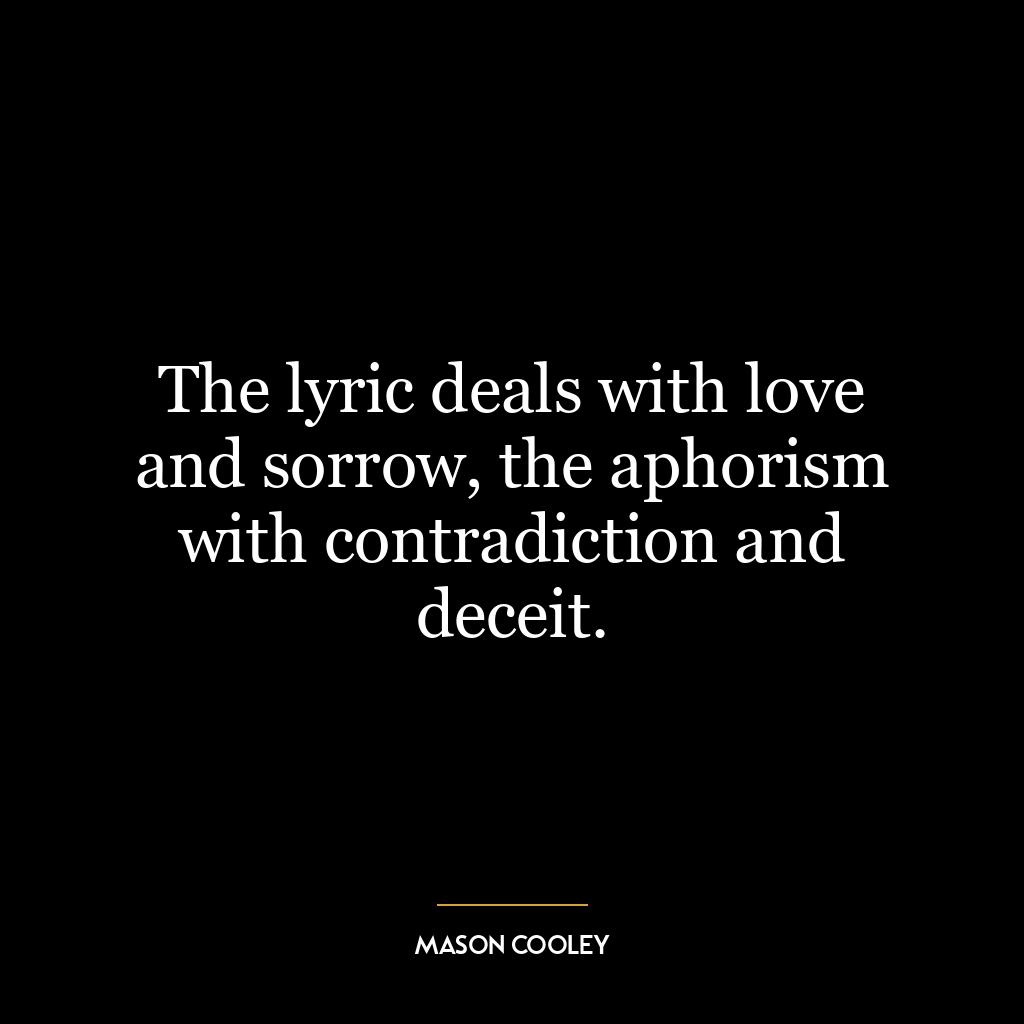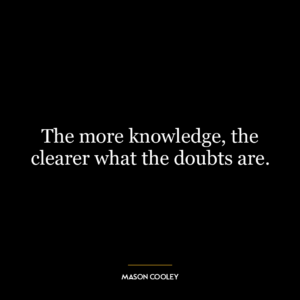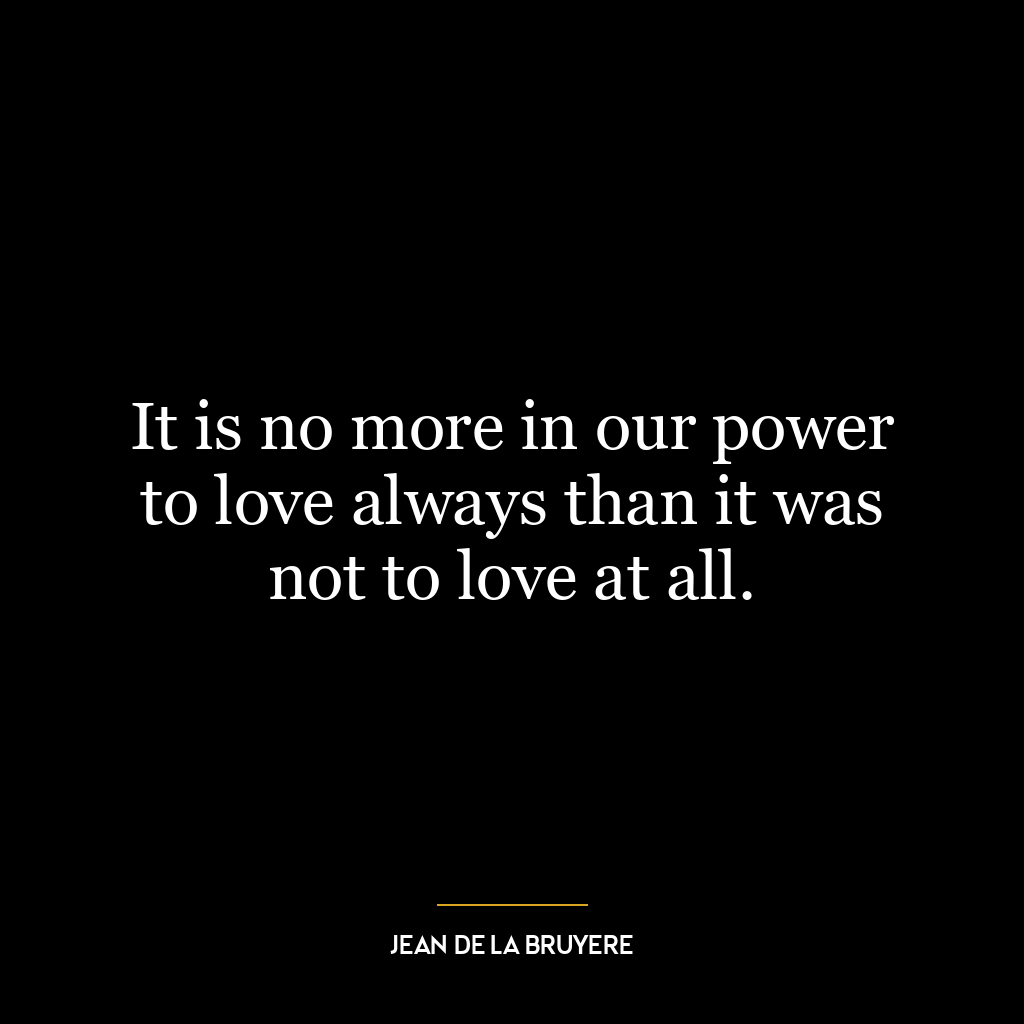The lyric deals with love and sorrow, the aphorism with contradiction and deceit.
This quote encapsulates the essence of two different forms of human expression – lyrics and aphorisms. Lyrics, often found in songs or poems, tend to explore the themes of love and sorrow. They are used to express deep emotions, allowing us to connect on a personal level with our joys and pains.
On the other hand, aphorisms—short statements expressing a general truth—are associated with contradiction and deceit. They often reveal harsh realities or paradoxes in life that we have to grapple with. Aphorisms force us to think critically about our beliefs and assumptions.
In today’s world, this idea is more relevant than ever as we navigate through an overwhelming amount of information filled with both truth and falsehoods. The lyric part reminds us that it’s essential for us to stay connected with our emotions—to love deeply and allow ourselves to feel sorrow when necessary—because these feelings make us human.
The aphorism part encourages critical thinking—it urges us not just accept everything at face value but question contradictions and be aware of potential deceit. This is particularly important in today’s digital age where misinformation can spread easily.
In terms of personal development, understanding this quote can guide one in achieving emotional intelligence while maintaining intellectual rigor. It teaches the importance of acknowledging your feelings (the ‘lyric’ aspect) while also using discernment when confronted with new information (the ‘aphorism’ aspect). In doing so, you become better equipped at managing your emotional wellbeing while also honing your critical thinking skills—a balance that is key for personal growth.















